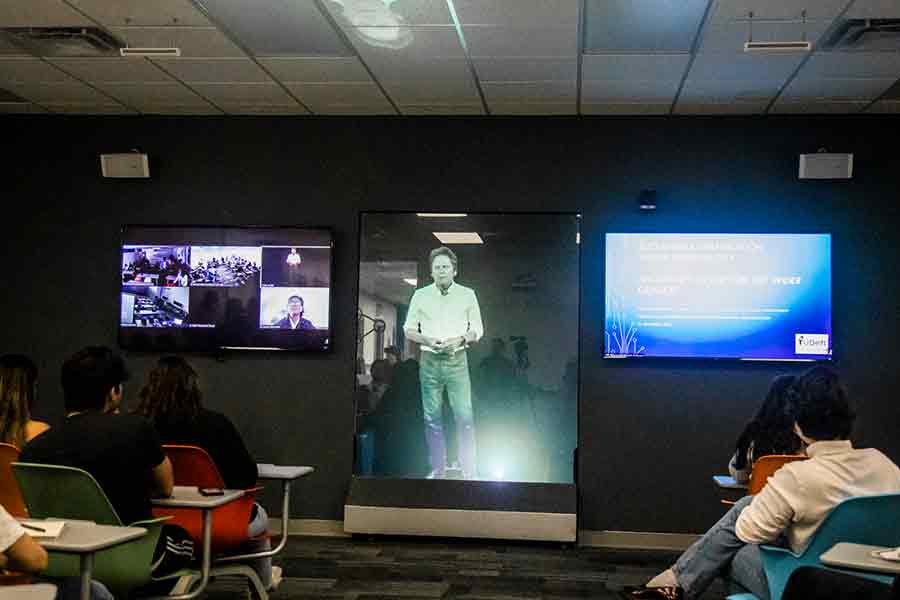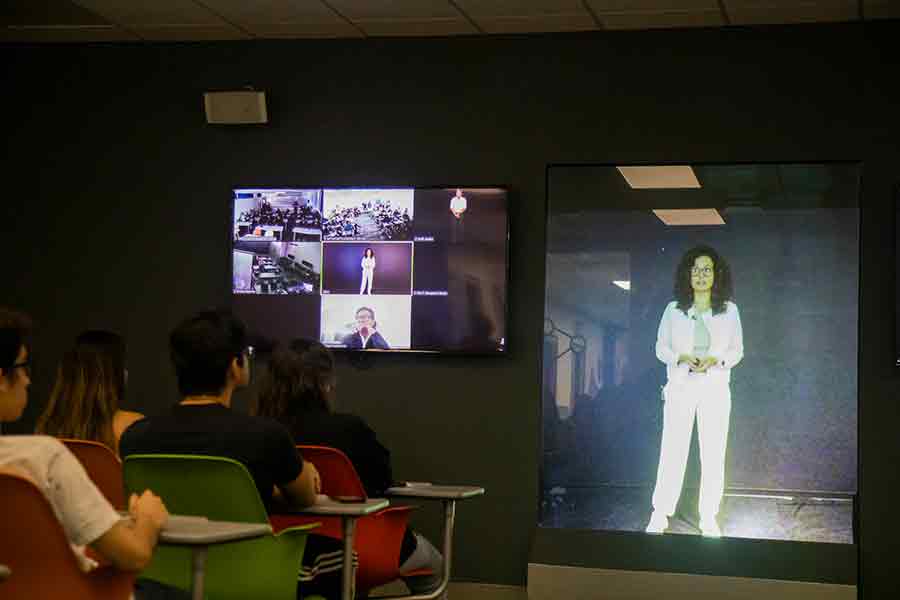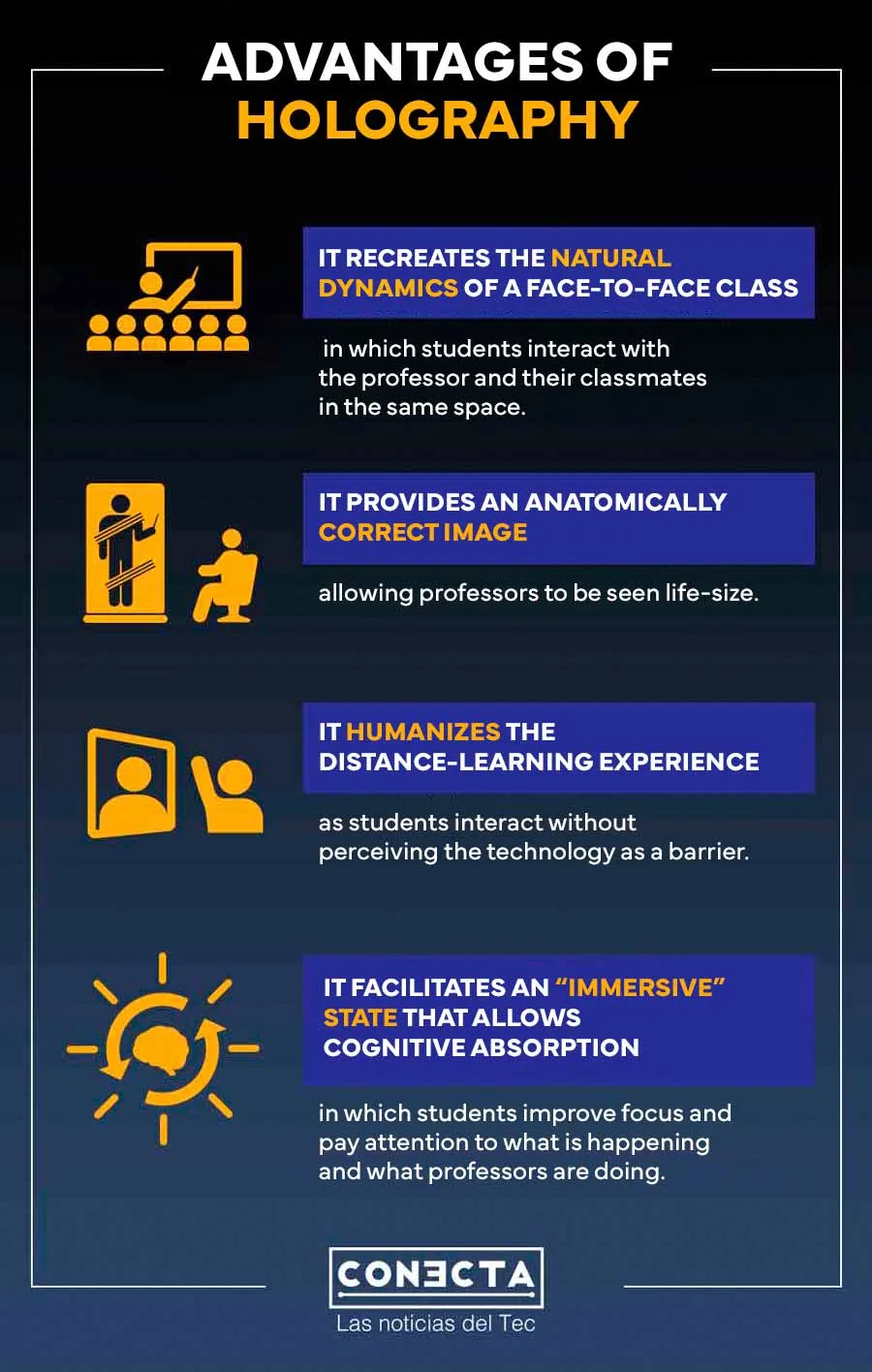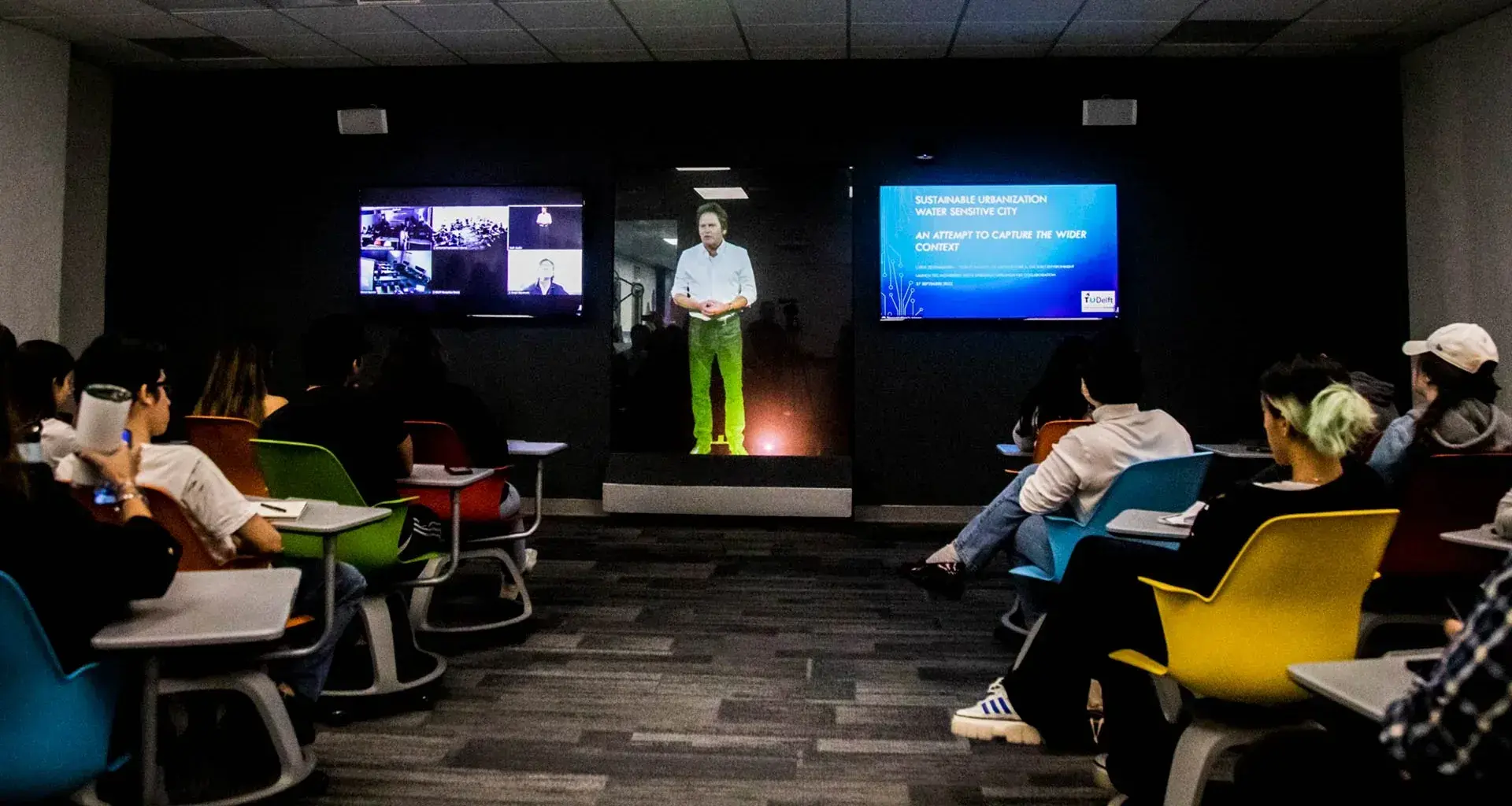Tec de Monterrey and Delft University of Technology (TU Delft) in the Netherlands have held the first intercontinental class using an educational innovation from the institution to teach with holographic projections of professors.
The class was held in real time with students and professors from the Tec’s Monterrey and Querétaro campuses, as well as with students and a visiting professor from TU Delft.
“This is the first time we’ve given an intercontinental class between universities,” said Patricia Aldape, Director of Learning Experience Innovation at the Tec.
“They came to us because they wanted to learn, and now we’re working together and showing them how this technology works,” she added.
The project for teaching with holographic-effect professors was introduced by the Tec in 2018 and allows students to see, hear, and interact in real time with a life-size professor projected via two-dimensional projection.

How the first intercontinental holographic class went
“Good morning to the students from Mexico at the Tec and good afternoon to the students from the Netherlands,” said Chris Zevenbergen to around 60 students who could see a whole-body projection of the professors from the 3 venues.
The first intercontinental holographic class between the Tec and TU Delft was held on Tuesday, September 27, at 10 a.m. in Mexico and 5 p.m. in the Netherlands.
Taking part were professors Paola Bárcena, Ernesto Philibert, and Rena Porsen Overgaard from the Tec’s School of Architecture, Art, and Design, as well as Chris Zevenbergen from TU Delft’s Department of Urbanism.
“We still have work to do, but it’s a fairly comprehensive experience. The idea is to implement technology developed over recent years, particularly during the pandemic,” said Ernesto Philibert, a professor at the School of Architecture, Art, and Design.
This first class consisted of a discussion between the Department of Urbanism at TU Delft and the Tec’s School of Architecture, Art, and Design.
The partnership between both departments dates back to before the implementation of holographic classes on topics such as water-sensitive urban design, urban flood risk management, and nature-based architectural solutions.
“It was a very enjoyable experience. It requires extra preparation and logistics, but then it’s a lot of fun. We even have the opportunity to interact with students from other continents and countries,” said Paola Bárcena, a professor at the School of Architecture, Art, and Design.

Seeking to improve technology and carry out academic projects
The collaboration agreement between Tec de Monterrey and Delft University of Technology (TU Delft) was signed in June 2022 with the aim of sharing technology as well as talent and academic content between both universities.
Patricia Aldape points out that the Tec will support TU Delft in improving the technology used in holographic projections as part of the partnership.
“They’re happy with the technology. They’re thinking of using it in their university in addition to the classes with us,” Aldape said.
“They have a large campus in Delft and they’re going to set up several host sites to hold hologram classes within the university,” she added.
“We’re carrying out this transfer of knowledge that we’ve built up over several years about broadcasting classes and broadcasting by hologram.”
Similarly, Carla Ramírez, Head of Educational Innovation and the initiative involving two-dimensional projection to create the illusion of hologram professors, says that this class opens up the opportunity for further collaborations in the future.
“We’re at the start of something that’s going to lead us to having connections with other universities apart from Delft. Having the opportunity to have the best experts is wonderful.
“We’re carrying out this transfer of knowledge that we’ve built up over several years about broadcasting classes and broadcasting by hologram. The idea is to accompany the universities in achieving this,” added Ramírez.
TU Delft is the oldest and largest university in the Netherlands, with over 25,000 students. In 2021, it was ranked 57th in the QS World University Rankings.
However, the Dutch university holds third place worldwide in the area of Architecture and Built Environment and 15th in Engineering and Technology.

Holographic-Effect Professors at the Tec
After coming to a stop due to the COVID-19 pandemic, the holographic projection initiative was reactivated with the participation of 20 professors from training units in various areas.
It’s an educational innovation that further humanizes the technological experience and generates an “immersive” environment much more similar to face-to-face classes.
One of the great advantages of this project is that it’s designed to be cheap and easily replicable and scalable for educational requirements.
Some of the units in which this technology was used include Market Strategy and Differentiation, Entrepreneurial Leadership Development Training, Control and Automation Engineering, and Integration Projects.
The Tec campuses that participated in this initiative during the August to December 2022 semester were Monterrey, Laguna, Saltillo, Querétaro, State of Mexico, Santa Fe, Mexico City, Chihuahua, and Tampico.
This is also the first semester in which a class has been held in conjunction with a university from another continent.
“We’re very happy and proud that Tec de Monterrey is driving educational innovation to create these experiences that enhance and transform the learning process,” said Aldape.
Likewise, Carla Ramírez pointed out that this intercontinental class has opened the door to more universities seeking to apply this technology in their respective countries.
Consortiums of universities from Germany, Ireland, and Italy are some of the groups that are visiting the Tec to learn about and subsequently apply this technology in their respective countries.

READ MORE:





